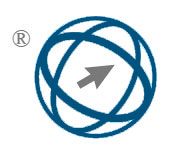SENet-Enhanced U-Net with Adaptive ViBe for Real-time Elderly Anomaly Detection in Smart Care Environments
Abstract
With the continuous growth of demand for elderly care services, smart elderly care systems urgently need to be optimized to detect abnormal behaviors of the elderly. This study is based on the U-Net architecture to construct a foreground model, combined with the SENet attention mechanism to enhance the ability of key feature extraction and integrate the improved ViBe algorithm. A novel detection framework for abnormal behavior recognition is proposed. The framework was tested on the URFD and le2i fall detection datasets and compared with TCN, DSNet, and 3D CNN models. On the le2i dataset, the proposed model achieved 94.12% accuracy, 93.25% recall, and 93.68% F1 score with an average detection latency of 0.76 seconds. On the URFD dataset, the accuracy, recall, and F1 score were 92.78%, 91.46%, and 92.11%, respectively. Additionally, under 30% background motion interference, the missed detection rate was 3.2%. In low-light conditions, the false alarm rate was 2.45%, with an intersection-over-union ratio of 0.92. These results indicate that the proposed method outperforms models such as TCN, DSNet, and 3D CNN across multiple metrics, demonstrating strong real-time detection performance and adaptability to complex environments. This method demonstrates strong adaptability in real-time monitoring and can provide effective technical support for the development of smart aging care.
Full Text:
PDFDOI: https://doi.org/10.31449/inf.v49i34.8849

This work is licensed under a Creative Commons Attribution 3.0 License.









